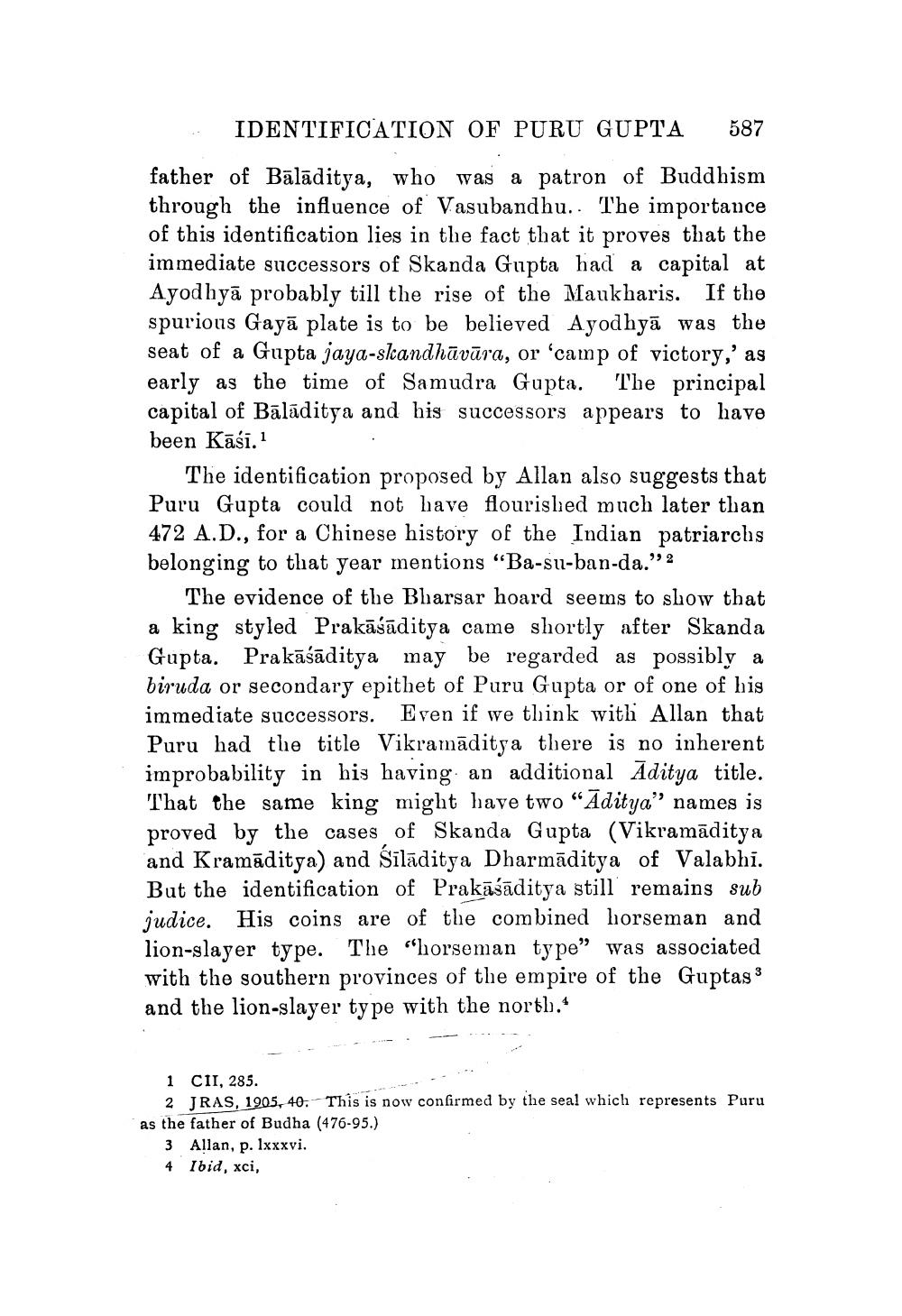________________
IDENTIFICATION OF PURU GUPTA
587
father of Bālāditya, who was a patron of Buddhism through the influence of Vasubandhu.. The importance of this identification lies in the fact that it proves that the immediate successors of Skanda Gupta had a capital at Ayodhyā probably till the rise of the Maukharis. If the spurious Gayā plate is to be believed Ayodhyā was the seat of a Gupta jaya-skandhāvāra, or 'camp of victory,' as early as the time of Samudra Gupta. The principal capital of Bālāditya and his successors appears to have been Kāśi.1
The identification proposed by Allan also suggests that Puru Gupta could not have flourislied much later than 472 A.D., for a Chinese history of the Indian patriarchs belonging to that year mentions "Ba-su-ban-da."
The evidence of the Bharsar hoard seems to show that a king styled Prakāśāditya came shortly after Skanda Gupta. Prakāśāditya may be regarded as possibly a biruda or secondary epithet of Puru Gupta or of one of his immediate successors. Even if we think withi Allan that Puru had the title Vikramāditya there is no inherent improbability in his having an additional Aditya title. That the same king might have two “Aditya" names is proved by the cases of Skanda Gupta (Vikramāditya and Kramāditya) and Sīlāditya Dharmāditya of Valabhi. But the identification of Prakāśāditya still remains sub judice. His coins are of the combined horseman and lion-slayer type. The "horseman type” was associated with the southern provinces of the empire of the Guptas 3 and the lion-slayer type with the north).
1 CII, 285.
2 JRAS, 1905, 40. This is now confirmed by the seal which represents Puru as the father of Budha (476-95.)
3 Allan, p. lxxxvi. 4 Ibid, xci,




